 This stellar collaboration springs from a conversation that Scott Morgan and Lawrence English once had about especially "rich sources" for electronic music composition. Unsurprisingly, that discussion led to the inspiration behind much of English's recent solo work: a 19th century pipe organ housed at the Old Museum in his native Brisbane. Colours Of Air is often quite different from English's drone-inspired solo fare, however, as he and Morgan sifted "the swells and drones of the organ for every shivering shade of radiance" and found "flickering infinities in ancient configurations of wind, brass, stone, and dust." In less poetic terms, that means that these eight color-themed pieces "reduce and expand" English's pipe organ recordings into a hallucinatory fantasia enhanced by Morgan's talents for elegantly textured sound design and submerged, slow-motion dub techno pulses. Obviously, promising-sounding collaborations between electronic music luminaries are a dime a dozen, but this is one of the rare ones that feels like an inspired departure from expected terrain and something greater than the sum of its parts. While I suspect my perception is at least partially colored by the album description and the timeless majesty and religious nature of old pipe organs, the best moments of this album beautifully evoke what I would imagine light filtering through stained glass would sound like if I had been blessed with synesthesia.
This stellar collaboration springs from a conversation that Scott Morgan and Lawrence English once had about especially "rich sources" for electronic music composition. Unsurprisingly, that discussion led to the inspiration behind much of English's recent solo work: a 19th century pipe organ housed at the Old Museum in his native Brisbane. Colours Of Air is often quite different from English's drone-inspired solo fare, however, as he and Morgan sifted "the swells and drones of the organ for every shivering shade of radiance" and found "flickering infinities in ancient configurations of wind, brass, stone, and dust." In less poetic terms, that means that these eight color-themed pieces "reduce and expand" English's pipe organ recordings into a hallucinatory fantasia enhanced by Morgan's talents for elegantly textured sound design and submerged, slow-motion dub techno pulses. Obviously, promising-sounding collaborations between electronic music luminaries are a dime a dozen, but this is one of the rare ones that feels like an inspired departure from expected terrain and something greater than the sum of its parts. While I suspect my perception is at least partially colored by the album description and the timeless majesty and religious nature of old pipe organs, the best moments of this album beautifully evoke what I would imagine light filtering through stained glass would sound like if I had been blessed with synesthesia.
The opening "Cyan" is the album's masterpiece, as it slowly builds from the "suspended animation" feel of a single looping organ chord into a slow-motion loscil-style dub techno piece with a gorgeously warm, alive, and shimmering ball of light at its heart. While the remaining pieces admittedly feel a bit less supernatural and transcendent than that initial statement, "Cyan" is nevertheless an ideal illustration of the "rich source" notion that guides the album: the piece is basically just a few chords and a simple bass pattern, but Morgan and English do one hell of a job at luxuriating in the glimmering details of those chords. That is not the duo's only trick, however, as the rest of the album features a number of compelling variations on their sacred-sounding minimalist deconstructions. For example, "Aqua" gradually evolves from a seesawing bed of melancholy yet dreamily aquatic-sounding chords into a smeared, Noveller-esque melody that evokes the haze of a comet slowly streaking through the cold night sky over a mountain range.


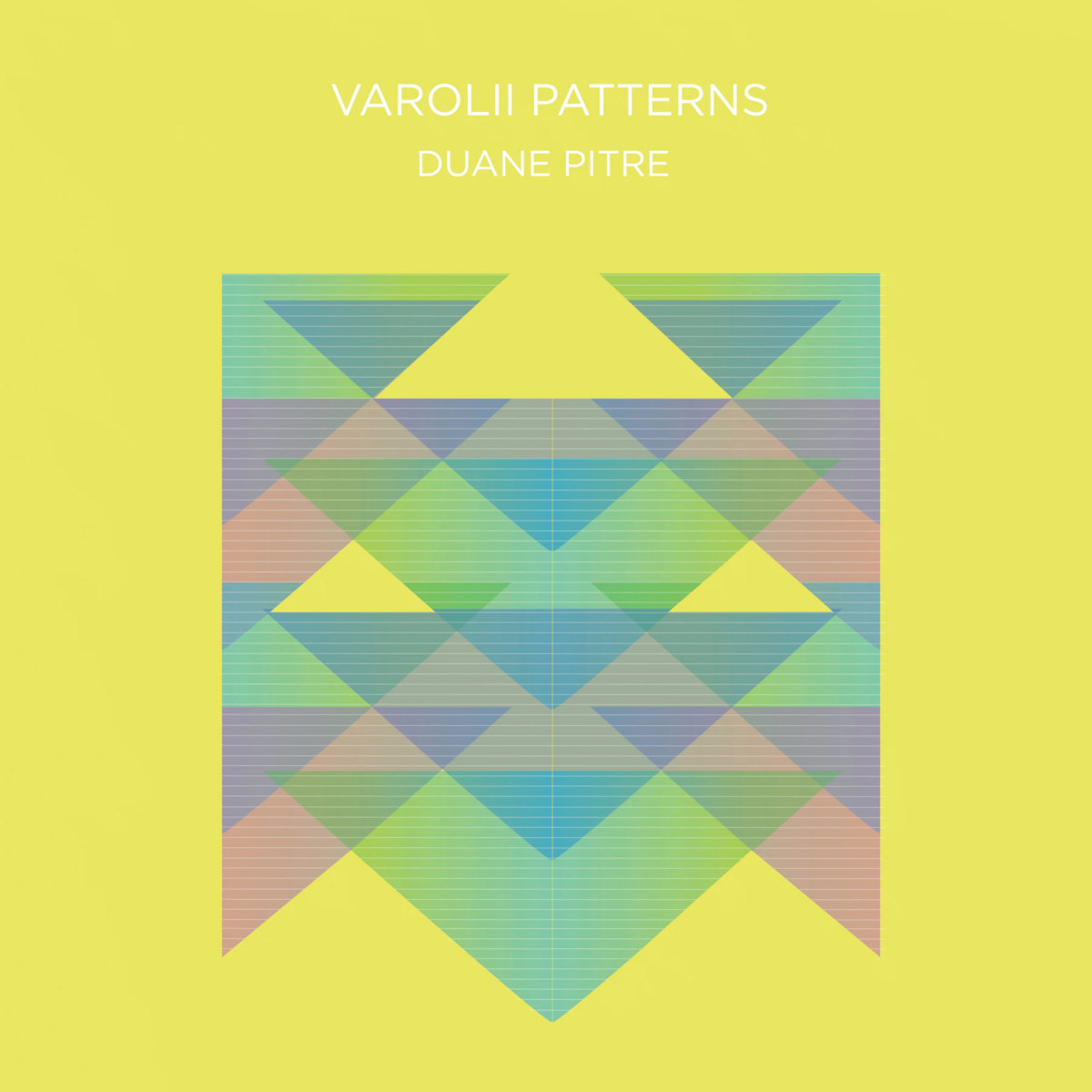 This latest cassette/digital release from composer/Just Intonation enthusiast Duane Pitre has its origins in a piece written for the brass ensemble Zinc & Copper a few years back (“Pons”), as he stumbled upon an intriguing process while “experimenting with microtonal electronics.” While those experiments did not ultimately make it into the final piece, they later surfaced as one element within 2021’s Omniscient Voices. That was just a fraction of the material recorded using that process, however, as Pitre had repeated it several dozen times and found himself with a considerable backlog of compelling material that was not an ideal fit for Omniscient Voices. Naturally, that led to the release of Varolii Patterns, which collects six of those process experiments that Pitre deemed strong enough to stand on their own both individually and as an album-length statement. The result is a unique and hypnotic suite of Just Intonation synth pieces that make magic from shifting patterns that “slip in and out of rhythmic focus.”
This latest cassette/digital release from composer/Just Intonation enthusiast Duane Pitre has its origins in a piece written for the brass ensemble Zinc & Copper a few years back (“Pons”), as he stumbled upon an intriguing process while “experimenting with microtonal electronics.” While those experiments did not ultimately make it into the final piece, they later surfaced as one element within 2021’s Omniscient Voices. That was just a fraction of the material recorded using that process, however, as Pitre had repeated it several dozen times and found himself with a considerable backlog of compelling material that was not an ideal fit for Omniscient Voices. Naturally, that led to the release of Varolii Patterns, which collects six of those process experiments that Pitre deemed strong enough to stand on their own both individually and as an album-length statement. The result is a unique and hypnotic suite of Just Intonation synth pieces that make magic from shifting patterns that “slip in and out of rhythmic focus.” Given Celer’s incredibly voluminous discography, releasing any kind of comprehensive retrospective would be one hell of a quixotic and cost-prohibitive endeavor, but this collection does the next best thing. Weighing in at 14 discs spanning 10 albums, this boxed set celebrates an especially significant and prolific era in the project’s evolution: the self-released albums that Will Long and the late Danielle Baquet-Long (Chubby Wolf) recorded as a duo before the latter’s passing in 2009. Not all of them, mind you, but this collection seems to at least cover the ones that matter most. Given that Celer is based in Japan and Bandcamp was still in its formative stages back then, I suspect very few people were hip enough to pounce on the duo’s early CD-Rs at the time of their original release, but the world definitely began to take notice soon after, as I remember Celer albums being a very hot commodity sometime around 2008/2009 when they started getting widely re-released. Unsurprisingly, there are some remastered fan favorites from that era included here, such as Continents and Cantus Libres, but I have grown so accustomed to Long’s current elegantly minimalist dream-drone aesthetic that I was legitimately surprised by the wider palette of moods and atmospheres explored at the project’s inception. Naturally, the gorgeously warm ambient dreamscapes that Celer has long been synonymous with are still the main draw here, but they are not the only draw, as I found it very illuminating to revisit the less-remembered noirish and sci-fi-inspired sides of the duo’s exploratory beginnings.
Given Celer’s incredibly voluminous discography, releasing any kind of comprehensive retrospective would be one hell of a quixotic and cost-prohibitive endeavor, but this collection does the next best thing. Weighing in at 14 discs spanning 10 albums, this boxed set celebrates an especially significant and prolific era in the project’s evolution: the self-released albums that Will Long and the late Danielle Baquet-Long (Chubby Wolf) recorded as a duo before the latter’s passing in 2009. Not all of them, mind you, but this collection seems to at least cover the ones that matter most. Given that Celer is based in Japan and Bandcamp was still in its formative stages back then, I suspect very few people were hip enough to pounce on the duo’s early CD-Rs at the time of their original release, but the world definitely began to take notice soon after, as I remember Celer albums being a very hot commodity sometime around 2008/2009 when they started getting widely re-released. Unsurprisingly, there are some remastered fan favorites from that era included here, such as Continents and Cantus Libres, but I have grown so accustomed to Long’s current elegantly minimalist dream-drone aesthetic that I was legitimately surprised by the wider palette of moods and atmospheres explored at the project’s inception. Naturally, the gorgeously warm ambient dreamscapes that Celer has long been synonymous with are still the main draw here, but they are not the only draw, as I found it very illuminating to revisit the less-remembered noirish and sci-fi-inspired sides of the duo’s exploratory beginnings. This third album from former lifeguard/Brussels-based electronic composer Poirier may very well be the most beautiful distillation of his gently psychotropic strain of loop-driven, summery, surf-side electronica to date. The same could have been said of 2020's Hotel Nota, of course, but Poirier's work genuinely seems to become more fascinating with each fresh album (and each new detail that I read about his inspirations). Unsurprisingly, Living Room does not dramatically depart from the "Jan Jelinek inspecting a coral reef" aesthetic first debuted on 2016's Plage Arrière, but it feels like Poirier's sundappled, beach-friendly vision of languorously flickering loops is increasingly headed deeper into more exotica-inspired territory, which is almost always a good move in my book. Aside from that continuing stylistic evolution, Living Room is also significant for being the first Poirier album to feature another one of his long-standing fascinations: the innate musicality of the human voice (particularly when de-coupled from language and meaning). Unsurprisingly, Poirier incorporates that new feature in a characteristically compelling and poignant way, as the album is peppered with chopped, screwed, and decontextualized fragments from his musician father's sample collection. The result is not quite "pop," yet it gets surprisingly close to it at times and those ephemeral glimpses of human warmth suit Poirier's swaying and sublime tropical dream beautifully.
This third album from former lifeguard/Brussels-based electronic composer Poirier may very well be the most beautiful distillation of his gently psychotropic strain of loop-driven, summery, surf-side electronica to date. The same could have been said of 2020's Hotel Nota, of course, but Poirier's work genuinely seems to become more fascinating with each fresh album (and each new detail that I read about his inspirations). Unsurprisingly, Living Room does not dramatically depart from the "Jan Jelinek inspecting a coral reef" aesthetic first debuted on 2016's Plage Arrière, but it feels like Poirier's sundappled, beach-friendly vision of languorously flickering loops is increasingly headed deeper into more exotica-inspired territory, which is almost always a good move in my book. Aside from that continuing stylistic evolution, Living Room is also significant for being the first Poirier album to feature another one of his long-standing fascinations: the innate musicality of the human voice (particularly when de-coupled from language and meaning). Unsurprisingly, Poirier incorporates that new feature in a characteristically compelling and poignant way, as the album is peppered with chopped, screwed, and decontextualized fragments from his musician father's sample collection. The result is not quite "pop," yet it gets surprisingly close to it at times and those ephemeral glimpses of human warmth suit Poirier's swaying and sublime tropical dream beautifully. This latest release from this eternally innovative Stockholm-based composer is a durational tour de force that first began to take shape in empty Berlin concert halls in the early months of the pandemic. While I note with grim humor that the pandemic has itself become an endlessly shifting durational tour de force, Malone’s primary inspiration came instead from the ambient sense of unreality and distorted time that became pervasive as the fabric of normal daily life quickly unraveled. Like many other artists, Malone suddenly found herself with plenty of free time during that period of dread, isolation, and uncertainty, yet she was fortunate enough to get an invitation to record new music at Berlin’s Funkhaus and MONOM and even luckier still to have some extremely talented friends around with newly open schedules themselves. In short, the stars were in perfect alignment for one hell of an avant-drone dream team to form, as Malone (armed with 72 sine wave oscillators) tapped in like-minded souls Stephen O’Malley and Lucy Railton and the expected slow-burning dark sorcery ensued. Does Spring Hide Its Joy feels like an inspired twist on the longform drone majesty of artists like Éliane Radigue, as Malone employed just intonation to layer complex and otherworldly harmonies while her collaborators gamely helped ensure that the crescendos were visceral, gnarled and snarling enough to leave a deep impression.
This latest release from this eternally innovative Stockholm-based composer is a durational tour de force that first began to take shape in empty Berlin concert halls in the early months of the pandemic. While I note with grim humor that the pandemic has itself become an endlessly shifting durational tour de force, Malone’s primary inspiration came instead from the ambient sense of unreality and distorted time that became pervasive as the fabric of normal daily life quickly unraveled. Like many other artists, Malone suddenly found herself with plenty of free time during that period of dread, isolation, and uncertainty, yet she was fortunate enough to get an invitation to record new music at Berlin’s Funkhaus and MONOM and even luckier still to have some extremely talented friends around with newly open schedules themselves. In short, the stars were in perfect alignment for one hell of an avant-drone dream team to form, as Malone (armed with 72 sine wave oscillators) tapped in like-minded souls Stephen O’Malley and Lucy Railton and the expected slow-burning dark sorcery ensued. Does Spring Hide Its Joy feels like an inspired twist on the longform drone majesty of artists like Éliane Radigue, as Malone employed just intonation to layer complex and otherworldly harmonies while her collaborators gamely helped ensure that the crescendos were visceral, gnarled and snarling enough to leave a deep impression. This mammoth and category-defying opus is easily the most wildly ambitious debut in recent memory (if not ever) and also happens to be one of my absolute favorite albums of 2022. It was one hell of an enigma at first as well, as Stroom quietly released the album back in October with absolutely no background information provided at all. Given the absolutely bananas volume of material (4 ½ hours) and the consistently high level of quality, I expected that it would be revealed to be some sort of decade-spanning art project involving an all-star cast of sound art luminaries, but I turned out to be spectacularly wrong about most of that. As it turns out, Voice Actor is instead a recent collaboration between Noa Kurzweil (Supertalented) and Levi Lanser (Ludittes), neither of whom I had previously encountered. However, I was at least partially right about the “art project” bit, as Sent From My Telephone collects three years of pieces that the duo originally intended as a radio play (and there are plenty of guest collaborators involved as well). The heart of the project, however, is Kurzweil’s seductive voice and her enigmatic diaristic monologues, which makes Félicia Atkinson a close kindred spirit, yet Lanser’s varied and phantasmagoric backdrops elevate the project into a mesmerizing durational mindfuck that effortlessly blurs the lines between spoken word, plunderphonics, ambient drone, outsider R&B, psychedelia, and Hype Williams’ hypnagogic sound collage side.
This mammoth and category-defying opus is easily the most wildly ambitious debut in recent memory (if not ever) and also happens to be one of my absolute favorite albums of 2022. It was one hell of an enigma at first as well, as Stroom quietly released the album back in October with absolutely no background information provided at all. Given the absolutely bananas volume of material (4 ½ hours) and the consistently high level of quality, I expected that it would be revealed to be some sort of decade-spanning art project involving an all-star cast of sound art luminaries, but I turned out to be spectacularly wrong about most of that. As it turns out, Voice Actor is instead a recent collaboration between Noa Kurzweil (Supertalented) and Levi Lanser (Ludittes), neither of whom I had previously encountered. However, I was at least partially right about the “art project” bit, as Sent From My Telephone collects three years of pieces that the duo originally intended as a radio play (and there are plenty of guest collaborators involved as well). The heart of the project, however, is Kurzweil’s seductive voice and her enigmatic diaristic monologues, which makes Félicia Atkinson a close kindred spirit, yet Lanser’s varied and phantasmagoric backdrops elevate the project into a mesmerizing durational mindfuck that effortlessly blurs the lines between spoken word, plunderphonics, ambient drone, outsider R&B, psychedelia, and Hype Williams’ hypnagogic sound collage side.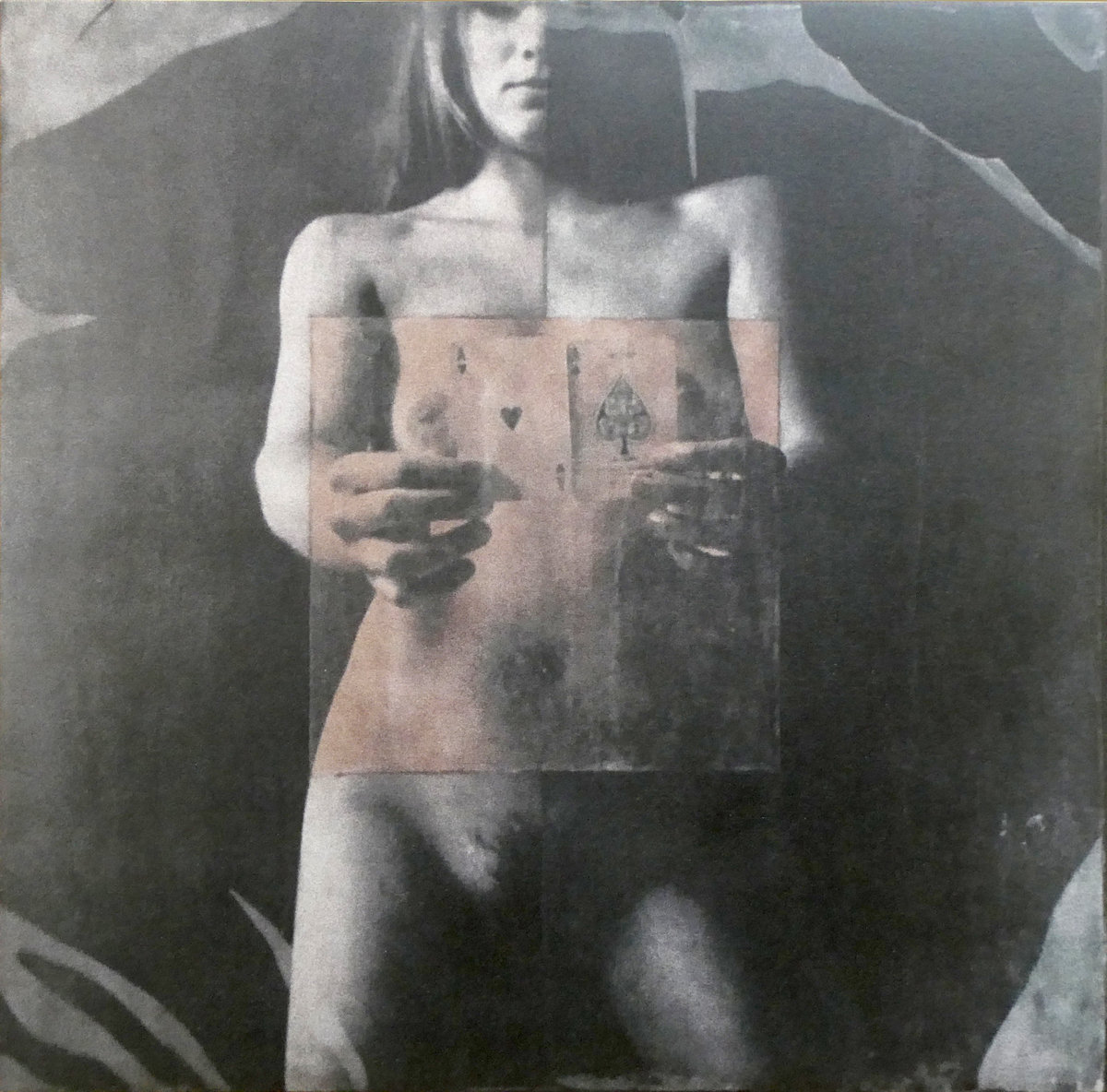 The French Standard In-Fi label has been one of my casual obsessions over the last few years and this second album from Omertà was my favorite release that surfaced from that milieu in 2022. From what I can tell as an outsider, there appears to be a loosely knit family of artists, psych enthusiasts, and avant-folk weirdos that convene periodically in varying configurations and occasionally an album will eventually surface documenting whatever magic transpired. Omertà unsurprisingly shares key members with other fitfully killer projects like France and Tanz Mein Herz, but this ensemble is an unique animal for a number of reasons. The most striking of those reasons are the breathy, sensuous vocals of Florence Giroud, who I believe is only active in this one project (as far as rock bands are concerned, at least). Giroud’s vocals aside, Omertà is also far more informed by eroticism, dream states, pop music, and chansons than the usual Standard In-Fi fare. To my ears, something compelling almost always seems to happen whenever Jeremie Sauvage &
The French Standard In-Fi label has been one of my casual obsessions over the last few years and this second album from Omertà was my favorite release that surfaced from that milieu in 2022. From what I can tell as an outsider, there appears to be a loosely knit family of artists, psych enthusiasts, and avant-folk weirdos that convene periodically in varying configurations and occasionally an album will eventually surface documenting whatever magic transpired. Omertà unsurprisingly shares key members with other fitfully killer projects like France and Tanz Mein Herz, but this ensemble is an unique animal for a number of reasons. The most striking of those reasons are the breathy, sensuous vocals of Florence Giroud, who I believe is only active in this one project (as far as rock bands are concerned, at least). Giroud’s vocals aside, Omertà is also far more informed by eroticism, dream states, pop music, and chansons than the usual Standard In-Fi fare. To my ears, something compelling almost always seems to happen whenever Jeremie Sauvage &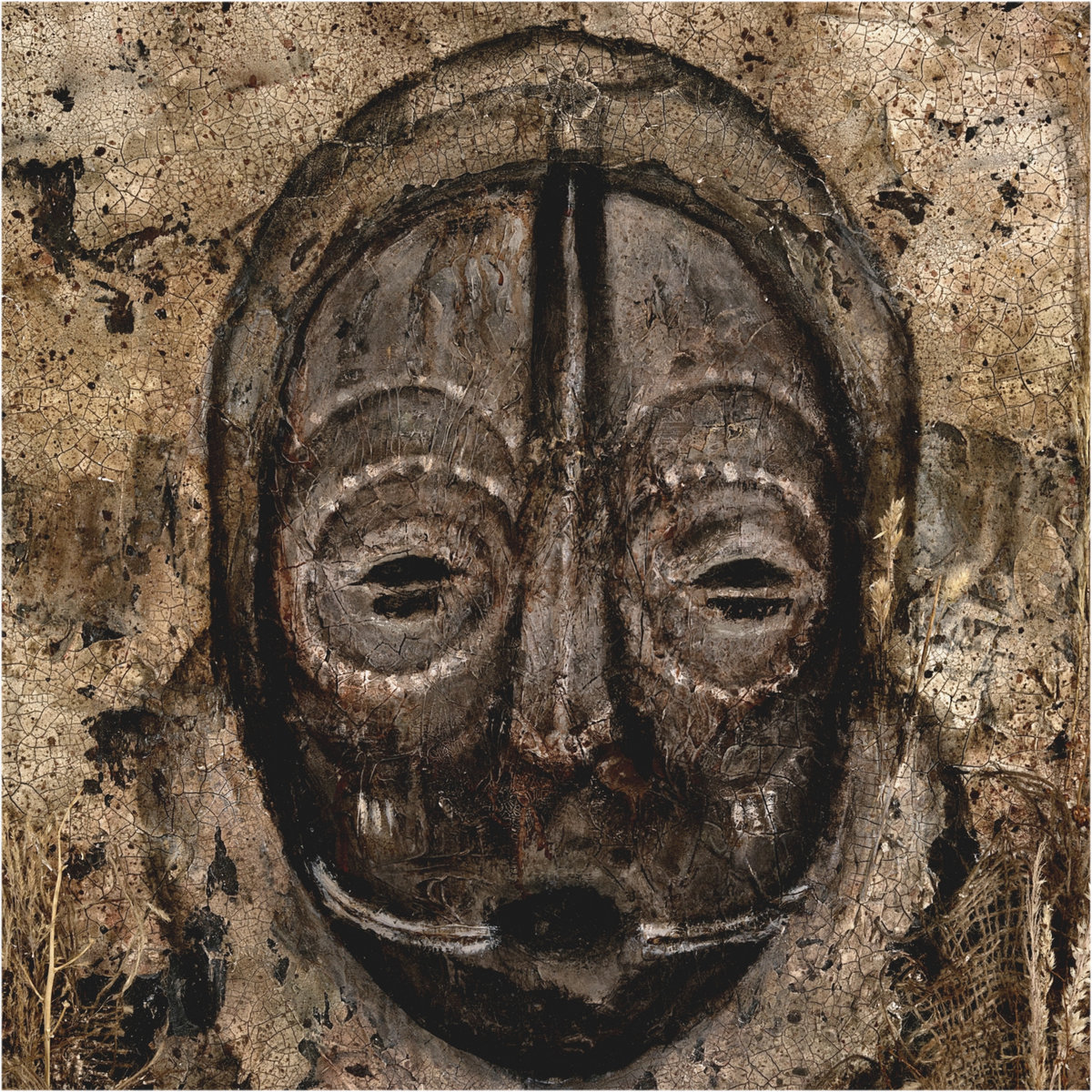 The latest from this shapeshifting and anonymous southwestern psych duo marks both their return to Akuphone and the first proper follow up to 2020's landmark The Totemist. To some degree, Ak'Chamel revisit roughly the same distinctive stylistic terrain as their last LP, approximating some kind of otherworldly and psychotropic collision of Sun City Girls and Sublime Frequencies. That said, Ak'Chamel do sound a hell of a lot more like a mariachi band soundtracking a jungle puppet nightmare this time around and that festively macabre vibe suits them quite nicely. The band might see things a little differently themselves, as this album is billed as "a perfect soundtrack for the desertification of our world," but experiencing this lysergic Cannibal Holocaust-esque mindfuck is probably just the thing for helping someone appreciate the wide-open spaces and solitude of desert life. In keeping with that desert theme, there are plenty of prominent Middle Eastern melodies and instruments on the album, but Ak'Chamel is singularly adept at dissolving regional boundaries (and possibly dimensional ones as well) in their quest for deep, exotic, and oft-uncategorizable psychedelia.
The latest from this shapeshifting and anonymous southwestern psych duo marks both their return to Akuphone and the first proper follow up to 2020's landmark The Totemist. To some degree, Ak'Chamel revisit roughly the same distinctive stylistic terrain as their last LP, approximating some kind of otherworldly and psychotropic collision of Sun City Girls and Sublime Frequencies. That said, Ak'Chamel do sound a hell of a lot more like a mariachi band soundtracking a jungle puppet nightmare this time around and that festively macabre vibe suits them quite nicely. The band might see things a little differently themselves, as this album is billed as "a perfect soundtrack for the desertification of our world," but experiencing this lysergic Cannibal Holocaust-esque mindfuck is probably just the thing for helping someone appreciate the wide-open spaces and solitude of desert life. In keeping with that desert theme, there are plenty of prominent Middle Eastern melodies and instruments on the album, but Ak'Chamel is singularly adept at dissolving regional boundaries (and possibly dimensional ones as well) in their quest for deep, exotic, and oft-uncategorizable psychedelia. This latest album from Carla dal Forno is her first since relocating to a small town (Castlemaine) in her native Australia and that dramatic change in environment has understandably made quite an impact on her overall vibe (as the album description puts it, she "returns self-assured and firmly settled within the dense eucalypt bushlands"). Fortunately, it seems like the transformation was an entirely favorable one, as literally everything that made dal Forno's previous work so wonderful and distinctive (ghostly pop hooks, stark bass-driven post-punk grooves, tight songcraft) remains intact. Now, however, her bloodless pop songs are charmingly enhanced with an understated tropical feel as well. For the most part, Come Around is still light years away from anything like a conventional beach party, but songs like the title piece at least come close to approximating a hypnagogic one. Aside from that, dal Forno also displays some impressive creative evolution on the production side, as these nine songs are a feast of subtle dubwise and psych-inspired touches in the periphery. That said, the primary appeal of Come Around is still the same as ever, as dal Forno remains nearly unerring in churning out songs so strong that they truly do not need anything more than her voice, a cool bass line, and a simple drum machine groove to leave a deep impression.
This latest album from Carla dal Forno is her first since relocating to a small town (Castlemaine) in her native Australia and that dramatic change in environment has understandably made quite an impact on her overall vibe (as the album description puts it, she "returns self-assured and firmly settled within the dense eucalypt bushlands"). Fortunately, it seems like the transformation was an entirely favorable one, as literally everything that made dal Forno's previous work so wonderful and distinctive (ghostly pop hooks, stark bass-driven post-punk grooves, tight songcraft) remains intact. Now, however, her bloodless pop songs are charmingly enhanced with an understated tropical feel as well. For the most part, Come Around is still light years away from anything like a conventional beach party, but songs like the title piece at least come close to approximating a hypnagogic one. Aside from that, dal Forno also displays some impressive creative evolution on the production side, as these nine songs are a feast of subtle dubwise and psych-inspired touches in the periphery. That said, the primary appeal of Come Around is still the same as ever, as dal Forno remains nearly unerring in churning out songs so strong that they truly do not need anything more than her voice, a cool bass line, and a simple drum machine groove to leave a deep impression. This is the first full-length collaboration between Sabra and Tabbal, but it is apparently also the sixth collaborative release between Portland's Beacon Sound and Lebanon's Ruptured Records (which was co-founded by Tabbal). While Tabbal's solo work has been a very enjoyable recent discovery for me, this is my first encounter with Julia Sabra, who is normally one-third of the excellent Beirut-based dreampop trio Postcards. The pair do have a history of working together, as Tabbal has co-produced several Postcards releases, but their creative union only began to take shape in the aftermath of Beirut's massive 2020 port explosion (which destroyed Sabra's home, badly injured her partner/bandmate Pascal Semerdjian, and displaced a whopping 300,000 people). Unsurprisingly, one of the primary themes of Snakeskin is the precarious concept of "home" and the "the disappearance of life as we know it" in a volatile and oft-violent world. Those are admittedly more urgent themes in Tabbal and Sabra's neck of the woods than some others (the album was also inspired by the 2021 Palestinian and the invasion of Armenia), but loss and uncertainty eventually come for us all and they make a universally poignant emotional core for an album. And, of course, great art can sometimes emerge from deeply felt tragedies and Tabbal and Sabra are a match made in heaven for that challenge, as Julia's sensuous, floating vocals are the perfect complement to Tabbal's gnarled and heaving soundscapes.
This is the first full-length collaboration between Sabra and Tabbal, but it is apparently also the sixth collaborative release between Portland's Beacon Sound and Lebanon's Ruptured Records (which was co-founded by Tabbal). While Tabbal's solo work has been a very enjoyable recent discovery for me, this is my first encounter with Julia Sabra, who is normally one-third of the excellent Beirut-based dreampop trio Postcards. The pair do have a history of working together, as Tabbal has co-produced several Postcards releases, but their creative union only began to take shape in the aftermath of Beirut's massive 2020 port explosion (which destroyed Sabra's home, badly injured her partner/bandmate Pascal Semerdjian, and displaced a whopping 300,000 people). Unsurprisingly, one of the primary themes of Snakeskin is the precarious concept of "home" and the "the disappearance of life as we know it" in a volatile and oft-violent world. Those are admittedly more urgent themes in Tabbal and Sabra's neck of the woods than some others (the album was also inspired by the 2021 Palestinian and the invasion of Armenia), but loss and uncertainty eventually come for us all and they make a universally poignant emotional core for an album. And, of course, great art can sometimes emerge from deeply felt tragedies and Tabbal and Sabra are a match made in heaven for that challenge, as Julia's sensuous, floating vocals are the perfect complement to Tabbal's gnarled and heaving soundscapes.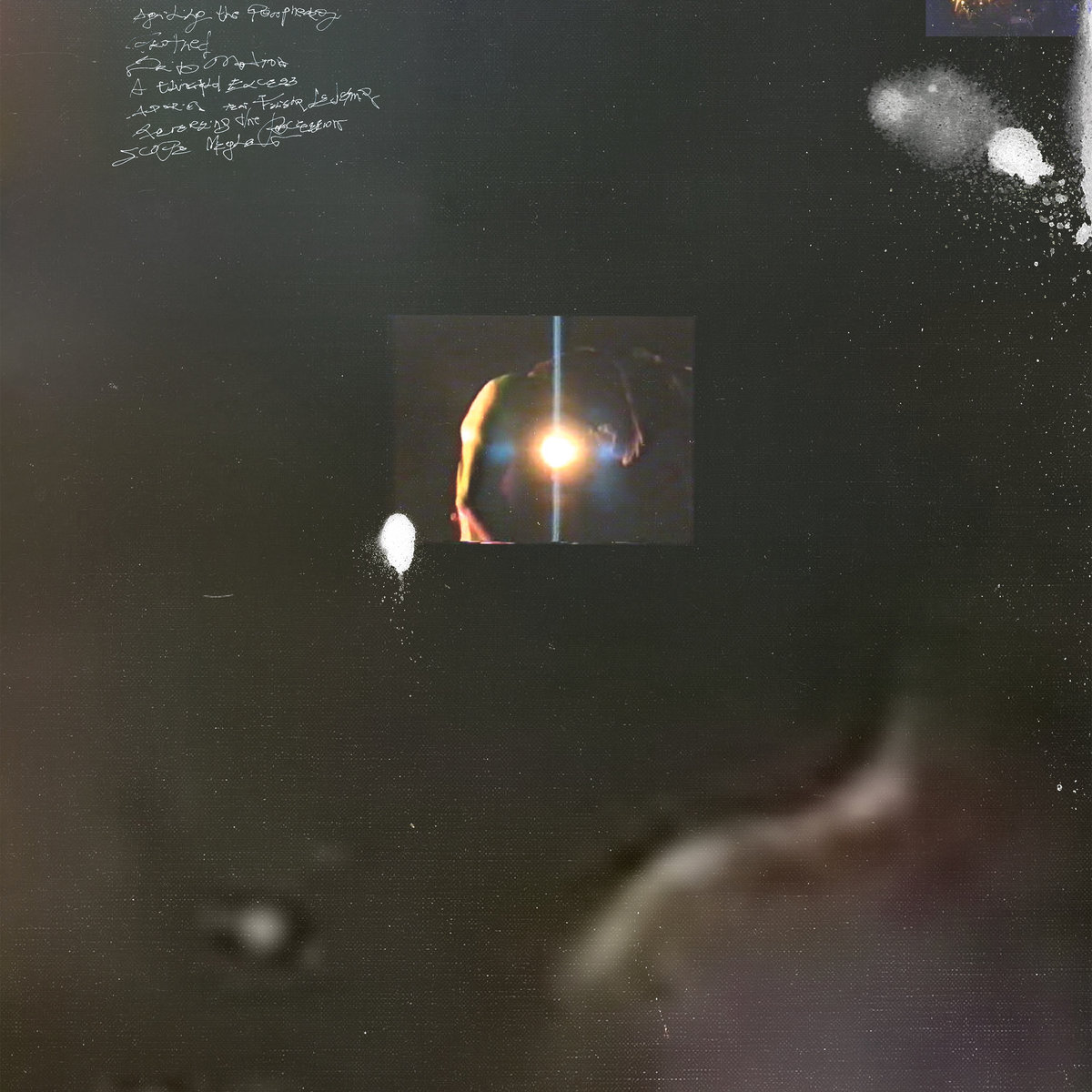 I was a bit later to the Angelo Harmsworth party than I would have liked, but the Berlin-based American composer has been fitfully releasing very distinctive blown-out "ambient" albums for about a decade now on an array of hip and discriminating small labels (Opal Tapes, Vaagner, enmossed, Psychic Liberation, etc.). Harmsworth's latest is his first for Students of Decay and marks a rare vinyl outing, as most of his previous physical releases have been limited to cassette. According to the label, Singe "may be the high water mark" of Harmsworth's career to date, which does feel like a completely plausible claim, but one that is very hard to confidently echo given how many killer Harmsworth pieces already exist. Even if Singe fails to conclusively eclipse all of Harmsworth's past triumphs, however, it does seem to be one of his most consistently strong releases and an ideal starting point for the curious. Notably, describing Harmsworth's vision as "ambient" or even "power ambient" feels cruelly reductionist, which is probably why he amusingly titled a 2020 release Fully Automated Luxury Ambient. That imaginary subgenre feels much closer to the mark, as the intensity and textural inventiveness that Angelo brings to these compositions shares far more common ground with artists like Tim Hecker or Fennesz (or collapsing power lines during a live volcano) than it does with anyone trafficking in droning, meditative loops.
I was a bit later to the Angelo Harmsworth party than I would have liked, but the Berlin-based American composer has been fitfully releasing very distinctive blown-out "ambient" albums for about a decade now on an array of hip and discriminating small labels (Opal Tapes, Vaagner, enmossed, Psychic Liberation, etc.). Harmsworth's latest is his first for Students of Decay and marks a rare vinyl outing, as most of his previous physical releases have been limited to cassette. According to the label, Singe "may be the high water mark" of Harmsworth's career to date, which does feel like a completely plausible claim, but one that is very hard to confidently echo given how many killer Harmsworth pieces already exist. Even if Singe fails to conclusively eclipse all of Harmsworth's past triumphs, however, it does seem to be one of his most consistently strong releases and an ideal starting point for the curious. Notably, describing Harmsworth's vision as "ambient" or even "power ambient" feels cruelly reductionist, which is probably why he amusingly titled a 2020 release Fully Automated Luxury Ambient. That imaginary subgenre feels much closer to the mark, as the intensity and textural inventiveness that Angelo brings to these compositions shares far more common ground with artists like Tim Hecker or Fennesz (or collapsing power lines during a live volcano) than it does with anyone trafficking in droning, meditative loops.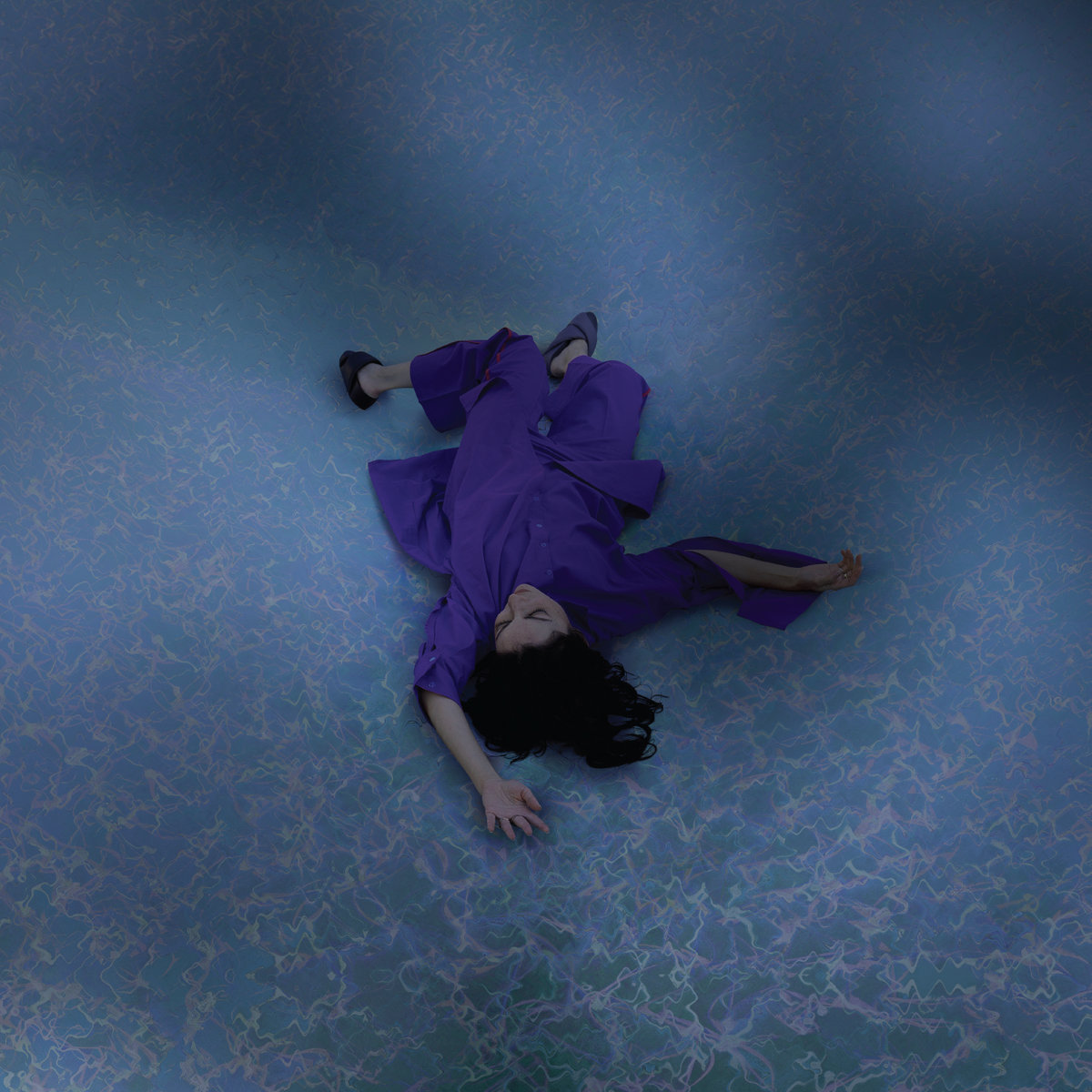 I was caught completely off guard by this latest opus from Dalt, as much of it sounds more like a three-way collaboration between Astrud Gilberto, Perez Prado, and Walter Wanderley than anything resembling the warped and stark electronic pop mutations that the Colombian composer has become synonymous with. After my initial disbelief subsided, however, I quickly decided that ¡Ay! may very well be the strongest album of Dalt's career to date. I suspect Dalt herself would probably agree, as it would be fair to say that her vision remains as compelling and innovative as ever, but she has merely kicked her self-imposed artistic restraints to the curb and embraced the warmer, more sensuous, and melodic sounds that she grew up around. Or, as the album description colorfully puts it, "through the spiraling tendencies of time and topography, Lucrecia has arrived where she began." In any case, the end result is a wonderfully sultry and evocative collection of seductive vocals and tropical rhythms beautifully enhanced with a host of psychotropic and industrial-damaged touches. And she somehow makes it sound like the most natural thing in the world. I definitely did not expect Dalt to secretly be a tropical pop genius at all, which makes her previous albums all the more fascinating now that I know that they were made while pointedly suppressing some of her greatest strengths.
I was caught completely off guard by this latest opus from Dalt, as much of it sounds more like a three-way collaboration between Astrud Gilberto, Perez Prado, and Walter Wanderley than anything resembling the warped and stark electronic pop mutations that the Colombian composer has become synonymous with. After my initial disbelief subsided, however, I quickly decided that ¡Ay! may very well be the strongest album of Dalt's career to date. I suspect Dalt herself would probably agree, as it would be fair to say that her vision remains as compelling and innovative as ever, but she has merely kicked her self-imposed artistic restraints to the curb and embraced the warmer, more sensuous, and melodic sounds that she grew up around. Or, as the album description colorfully puts it, "through the spiraling tendencies of time and topography, Lucrecia has arrived where she began." In any case, the end result is a wonderfully sultry and evocative collection of seductive vocals and tropical rhythms beautifully enhanced with a host of psychotropic and industrial-damaged touches. And she somehow makes it sound like the most natural thing in the world. I definitely did not expect Dalt to secretly be a tropical pop genius at all, which makes her previous albums all the more fascinating now that I know that they were made while pointedly suppressing some of her greatest strengths. This may be Swiss pianist/composer Raphael Loher's first solo album, but he has crossed my path before with his Baumschule trio (featuring Julian Sartorius and Manuel Troller). I am much less familiar with Loher's other trio (KALI), but the importance is that he has spent time improvising with inspiring musicians and has accumulated some very intriguing compositional ideas along the way. Interestingly, Keemuun is itself a bit of an improvisatory collaboration with inspiring (if unwitting) musicians, as Loher often played along with albums by other artists while experimenting with his rapid-fire piano patterns (Beatrice Dillon's rhythmically adventurous Workaround was a particularly central touchstone). In fact, just about everything about this album's evolution feels like fertile grist for a "galaxy brain" meme: a prepared piano album…limited to only ten notes spanning two octaves…improvised against cutting edge techno rhythms…but with all of those foundational rhythms totally excised from the final recording. Needless to say, all of those factors make for a very cool album concept in theory, but I am pleased to report that Loher's brilliant execution has made this a killer album in reality as well.
This may be Swiss pianist/composer Raphael Loher's first solo album, but he has crossed my path before with his Baumschule trio (featuring Julian Sartorius and Manuel Troller). I am much less familiar with Loher's other trio (KALI), but the importance is that he has spent time improvising with inspiring musicians and has accumulated some very intriguing compositional ideas along the way. Interestingly, Keemuun is itself a bit of an improvisatory collaboration with inspiring (if unwitting) musicians, as Loher often played along with albums by other artists while experimenting with his rapid-fire piano patterns (Beatrice Dillon's rhythmically adventurous Workaround was a particularly central touchstone). In fact, just about everything about this album's evolution feels like fertile grist for a "galaxy brain" meme: a prepared piano album…limited to only ten notes spanning two octaves…improvised against cutting edge techno rhythms…but with all of those foundational rhythms totally excised from the final recording. Needless to say, all of those factors make for a very cool album concept in theory, but I am pleased to report that Loher's brilliant execution has made this a killer album in reality as well.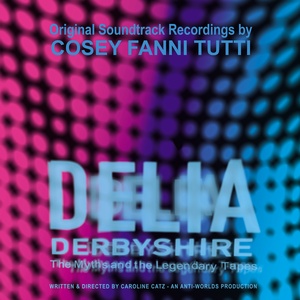 We seem to be in the midst of a long-overdue Delia Derbyshire renaissance at the moment due to the efforts of filmmaker Caroline Catz, Cosey Fanni Tutti, BBC Radiophonic Workshop's Mark Ayres, and others. Fittingly, this unusual and inspired album was commissioned back in 2018 as a score for Catz's similarly unconventional feature-length documentary. Sadly, it seems damn near impossible to see Catz's film at the moment (outside the UK, at least), but this soundtrack was released earlier this year to coincide with Cosey's own foray into telling Derbyshire's story (Re-Sisters: The Lives and Recordings of Delia Derbyshire, Margery Kempe and Cosey Fanni Tutti). The book, film, and album were all inspired by research into Derbyshire's archive and the voluminous recordings and writings that became available after the visionary electronic artist's passing in 2001. Apparently, copyright issues are preventing much of Derbyshire's unearthed work from seeing an official release (there are some great unofficial ones like Inventions For Radio/The Dreams out there), but this album is a compelling consolation prize: using Derbyshire's notes on her compositions and techniques, Cosey has achieved a sort of posthumous homage/collaboration in which her own aesthetic is co-mingled with Derbyshire's singular and groundbreaking techniques and sounds.
We seem to be in the midst of a long-overdue Delia Derbyshire renaissance at the moment due to the efforts of filmmaker Caroline Catz, Cosey Fanni Tutti, BBC Radiophonic Workshop's Mark Ayres, and others. Fittingly, this unusual and inspired album was commissioned back in 2018 as a score for Catz's similarly unconventional feature-length documentary. Sadly, it seems damn near impossible to see Catz's film at the moment (outside the UK, at least), but this soundtrack was released earlier this year to coincide with Cosey's own foray into telling Derbyshire's story (Re-Sisters: The Lives and Recordings of Delia Derbyshire, Margery Kempe and Cosey Fanni Tutti). The book, film, and album were all inspired by research into Derbyshire's archive and the voluminous recordings and writings that became available after the visionary electronic artist's passing in 2001. Apparently, copyright issues are preventing much of Derbyshire's unearthed work from seeing an official release (there are some great unofficial ones like Inventions For Radio/The Dreams out there), but this album is a compelling consolation prize: using Derbyshire's notes on her compositions and techniques, Cosey has achieved a sort of posthumous homage/collaboration in which her own aesthetic is co-mingled with Derbyshire's singular and groundbreaking techniques and sounds. When I first heard the thumping house/disco EP Was It Ever Real?, I had a very hard time believing that it could possibly be a teaser for something more substantial, as much of that EP felt like top-tier Soft Pink Truth that leaves very little room for improvement. If those songs did not make the cut for the full-length, I felt the album surely had to be either absolutely brilliant or absolutely wrong-headed with no possible middle ground. As it turns out, I was at least right about the "little room for improvement" bit, as Is It Going To Get Any Deeper Than This? is not noticeably stronger than the preceding EP. Instead, it feels more like a lateral move, taking Drew Daniel's star-studded house party in a more kaleidoscopically arty and eccentric direction. Unsurprisingly, Deeper features roughly the same international cast of talented guests as the EP, but there are some noteworthy new additions as well, such as Nate Wooley, Wye Oak's Jenn Wasner, and Jaime Stewart (Xiu Xiu). The result is a bit less "all killer, no filler" this time around, but the trade-off is that Deeper is an appropriately deeper and more immersive plunge into Daniel's psyche, touching upon everything from Barry White to George Bataille to krautrock while still managing to be functional, forward-thinking, and archly fun dance music.
When I first heard the thumping house/disco EP Was It Ever Real?, I had a very hard time believing that it could possibly be a teaser for something more substantial, as much of that EP felt like top-tier Soft Pink Truth that leaves very little room for improvement. If those songs did not make the cut for the full-length, I felt the album surely had to be either absolutely brilliant or absolutely wrong-headed with no possible middle ground. As it turns out, I was at least right about the "little room for improvement" bit, as Is It Going To Get Any Deeper Than This? is not noticeably stronger than the preceding EP. Instead, it feels more like a lateral move, taking Drew Daniel's star-studded house party in a more kaleidoscopically arty and eccentric direction. Unsurprisingly, Deeper features roughly the same international cast of talented guests as the EP, but there are some noteworthy new additions as well, such as Nate Wooley, Wye Oak's Jenn Wasner, and Jaime Stewart (Xiu Xiu). The result is a bit less "all killer, no filler" this time around, but the trade-off is that Deeper is an appropriately deeper and more immersive plunge into Daniel's psyche, touching upon everything from Barry White to George Bataille to krautrock while still managing to be functional, forward-thinking, and archly fun dance music. This is my first encounter with this UK-based improv unit, but Fallout 4 is the latest installment of a series of live documents that began all the way back in 2001. The band/collective itself has existed since 1996, though it seems like there's been at least one decade-long hiatus and the ensemble's members have all been active in other projects ranging from prog to ambient to art pop (while Andrew Ostler has been busy building modular synth hardware, among other things). Notably, Darkroom has recently reactivated and released some new material, but the performance documented here dates back to 2012 and the aesthetic lies somewhere between slow-burning Tarentel-style post-rock and Tangerine Dream-inspired space ambient (though Can was apparently a significant inspiration as well). On a related note, the album was mastered by Jono Podmore, who played a significant role in yet another fine vault project (Can's The Lost Tapes). I suspect Podmore had a challenging task on his hands, as the band tellingly state that he was chosen both for "his ability to control sonic forces" and "to make sure it was finally done." While this album and the Fallout series in general capture the band in a more noirish and shadowy mood than usual, I can see why they were so keen to get these recordings out into the world even a decade late, as much of this album is spacey, slow-motion psych magic.
This is my first encounter with this UK-based improv unit, but Fallout 4 is the latest installment of a series of live documents that began all the way back in 2001. The band/collective itself has existed since 1996, though it seems like there's been at least one decade-long hiatus and the ensemble's members have all been active in other projects ranging from prog to ambient to art pop (while Andrew Ostler has been busy building modular synth hardware, among other things). Notably, Darkroom has recently reactivated and released some new material, but the performance documented here dates back to 2012 and the aesthetic lies somewhere between slow-burning Tarentel-style post-rock and Tangerine Dream-inspired space ambient (though Can was apparently a significant inspiration as well). On a related note, the album was mastered by Jono Podmore, who played a significant role in yet another fine vault project (Can's The Lost Tapes). I suspect Podmore had a challenging task on his hands, as the band tellingly state that he was chosen both for "his ability to control sonic forces" and "to make sure it was finally done." While this album and the Fallout series in general capture the band in a more noirish and shadowy mood than usual, I can see why they were so keen to get these recordings out into the world even a decade late, as much of this album is spacey, slow-motion psych magic. This Chicago-based singer-songwriter is a bit of an enigma to me, as details about his discography are quite slim. As far as I can tell, however, 3am is his second solo album, which is noteworthy given that it has been 8 long years since Swan’s similarly excellent debut (I'll Be Around) surfaced. What he was up to during that hiatus is mostly unknown to me (aside from "drawing the night in around his private, unnerving vigil," of course), but one thing I do know is that he formed a duo with James Schimpl called Dead Bandit that released their debut on Quindi last year (the same label behind this album). In any case, 3am is one hell of an aptly titled album, as it very much has the feel of a hushed, late-night confessional via four-track. The overall aesthetic calls to mind the "desolate outsider folk" blurring of an insomniac Elliott Smith or Zelienople with the homespun intimacy of early Iron and Wine, yet the pervasive mood of late night sadness is beautifully balanced with cool production tricks and shades of more lively and eclectic influences like Suicide and Charlie Megira.
This Chicago-based singer-songwriter is a bit of an enigma to me, as details about his discography are quite slim. As far as I can tell, however, 3am is his second solo album, which is noteworthy given that it has been 8 long years since Swan’s similarly excellent debut (I'll Be Around) surfaced. What he was up to during that hiatus is mostly unknown to me (aside from "drawing the night in around his private, unnerving vigil," of course), but one thing I do know is that he formed a duo with James Schimpl called Dead Bandit that released their debut on Quindi last year (the same label behind this album). In any case, 3am is one hell of an aptly titled album, as it very much has the feel of a hushed, late-night confessional via four-track. The overall aesthetic calls to mind the "desolate outsider folk" blurring of an insomniac Elliott Smith or Zelienople with the homespun intimacy of early Iron and Wine, yet the pervasive mood of late night sadness is beautifully balanced with cool production tricks and shades of more lively and eclectic influences like Suicide and Charlie Megira. Keeping up with Andrew Chalk’s discography has always been an amusingly challenging endeavor, but the challenge has shifted from pouncing on limited edition physical releases to vigilantly ensuring that he does not quietly surface with a substantial new opus of some kind without my notice. The most recent substantial new opus is this one on Colin Potter’s ICR label, which is billed as Chalk’s “first new solo album in five years.” It certainly feels like a major statement to me, though the meaning of terms like “new” and “album” can be quite blurry and elusive given Chalk’s singularly minimalist approach to providing album details. In any case, The End Times was (perhaps prophetically) recorded earlier this year and marks a rare CD release after Chalk’s recent run of cassettes. Beyond that, further details are quite slim. That is just fine by me, as the only thing that actually matters is that Andrew Chalk is still making incredibly beautiful and distinctive music, as The End Times is a characteristically sublime and immersive dreamscape of tender melodies, elegantly shifting moods, and vividly detailed textures.
Keeping up with Andrew Chalk’s discography has always been an amusingly challenging endeavor, but the challenge has shifted from pouncing on limited edition physical releases to vigilantly ensuring that he does not quietly surface with a substantial new opus of some kind without my notice. The most recent substantial new opus is this one on Colin Potter’s ICR label, which is billed as Chalk’s “first new solo album in five years.” It certainly feels like a major statement to me, though the meaning of terms like “new” and “album” can be quite blurry and elusive given Chalk’s singularly minimalist approach to providing album details. In any case, The End Times was (perhaps prophetically) recorded earlier this year and marks a rare CD release after Chalk’s recent run of cassettes. Beyond that, further details are quite slim. That is just fine by me, as the only thing that actually matters is that Andrew Chalk is still making incredibly beautiful and distinctive music, as The End Times is a characteristically sublime and immersive dreamscape of tender melodies, elegantly shifting moods, and vividly detailed textures. Few artists have consistently fascinated and perplexed me quite like Oren Ambarchi, as I absolutely loved his early solo guitar albums like Grapes From the Estate, then witnessed him spend the next 15 or 20 years exploring improvisatory and rhythmic-driven detours to continually intensifying and breathless acclaim. I imagine it feels somewhat akin to being a Velvet Underground fan encountering unanimous rapturous praise for their post-Cale albums–I get the appeal, but that would not be my personal go-to era if I wanted to illustrate that band's greatness. Then again, maybe my perspective on Ambarchi's evolution would shift dramatically if I just liked jazz fusion more. In any case, I can certainly understand the unusual trajectory from Oren's viewpoint, as few would pass up a chance to form a trio with Jim O'Rourke and Keiji Haino and jamming with talented friends over mutant krautrock/fusion grooves seems like a hell of a lot more fun than making slow-motion guitar magic by yourself (can't fault a guy for loving spontaneity and challenging new collaborations). Both spontaneity and inspiring guest performances abound on Shebang, as Ambarchi enlisted quite a killer (virtual) ensemble, resulting in one of my favorite of his albums in recent memory (2016's Hubris being the other serious contender).
Few artists have consistently fascinated and perplexed me quite like Oren Ambarchi, as I absolutely loved his early solo guitar albums like Grapes From the Estate, then witnessed him spend the next 15 or 20 years exploring improvisatory and rhythmic-driven detours to continually intensifying and breathless acclaim. I imagine it feels somewhat akin to being a Velvet Underground fan encountering unanimous rapturous praise for their post-Cale albums–I get the appeal, but that would not be my personal go-to era if I wanted to illustrate that band's greatness. Then again, maybe my perspective on Ambarchi's evolution would shift dramatically if I just liked jazz fusion more. In any case, I can certainly understand the unusual trajectory from Oren's viewpoint, as few would pass up a chance to form a trio with Jim O'Rourke and Keiji Haino and jamming with talented friends over mutant krautrock/fusion grooves seems like a hell of a lot more fun than making slow-motion guitar magic by yourself (can't fault a guy for loving spontaneity and challenging new collaborations). Both spontaneity and inspiring guest performances abound on Shebang, as Ambarchi enlisted quite a killer (virtual) ensemble, resulting in one of my favorite of his albums in recent memory (2016's Hubris being the other serious contender). Midnight Rocker borrows its title from the opening line of Massive Attack's "Safe From Harm," which was the lead song on their 1991 debut Blue Lines. Notably, that album was the beginning of Andy's recurring involvement with that project, but "Safe From Harm" is a curious song to revisit, as Andy did not sing on the original and it has a darker, more dramatic tone than the rest of Midnight Rocker. Given how wildly successful that album was, I imagine its inclusion here was a savvy choice, but its killer bass and tambourine groove plays far more to Sherwood's strengths than the lyrics and tone do to Andy's. The album's other trips down memory lane are a handful of contemporized resurrections from Andy's own sprawling discography such as "This Must Be Hell, "Materialist," and "Mr. Bassie." Of that lot, "Mr. Bassie" fares the best, as it boasts a strong melodic hook and wades into increasingly dubby territory as it unfolds.
Midnight Rocker borrows its title from the opening line of Massive Attack's "Safe From Harm," which was the lead song on their 1991 debut Blue Lines. Notably, that album was the beginning of Andy's recurring involvement with that project, but "Safe From Harm" is a curious song to revisit, as Andy did not sing on the original and it has a darker, more dramatic tone than the rest of Midnight Rocker. Given how wildly successful that album was, I imagine its inclusion here was a savvy choice, but its killer bass and tambourine groove plays far more to Sherwood's strengths than the lyrics and tone do to Andy's. The album's other trips down memory lane are a handful of contemporized resurrections from Andy's own sprawling discography such as "This Must Be Hell, "Materialist," and "Mr. Bassie." Of that lot, "Mr. Bassie" fares the best, as it boasts a strong melodic hook and wades into increasingly dubby territory as it unfolds.
